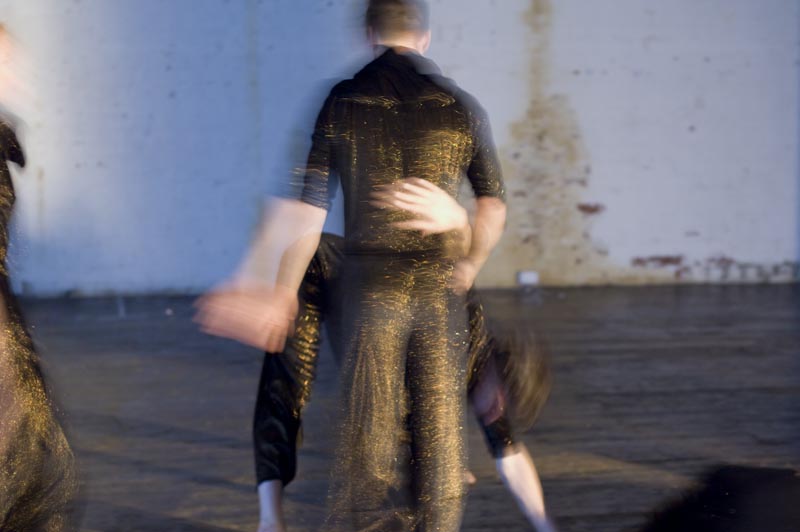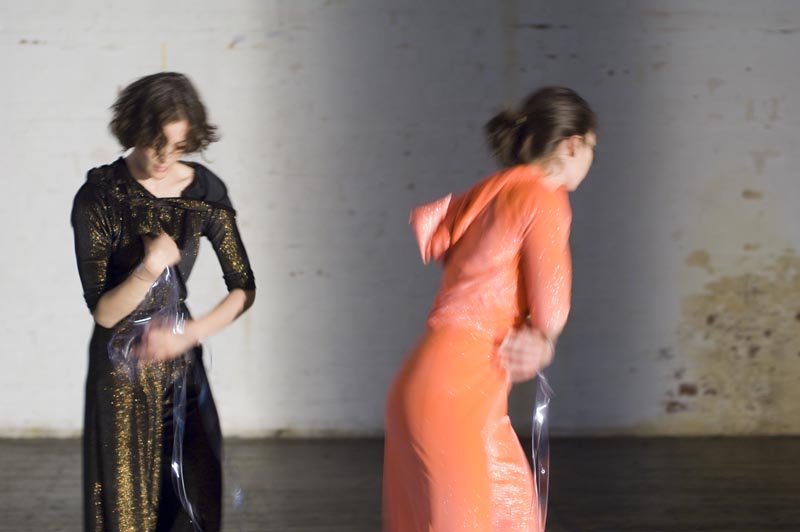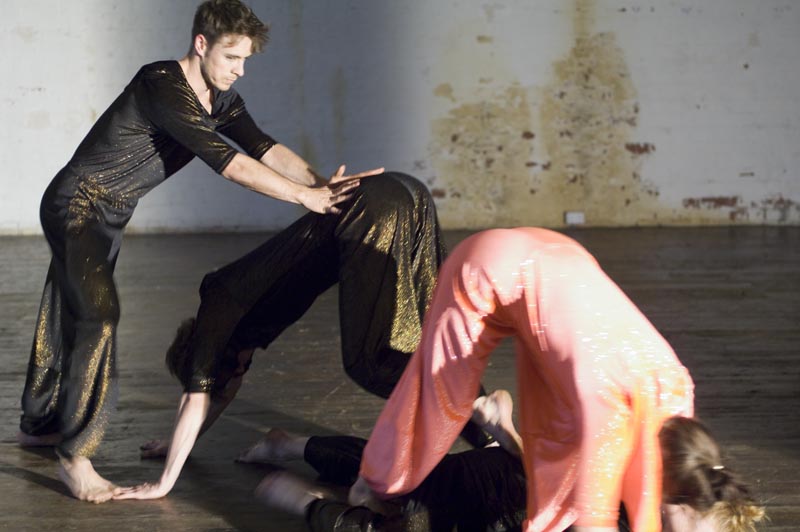VIANNE
VIANNE is about the space and the place one holds within, and that is also inhabited with other people: it is about knowing and how one knows. Where is VIANNE, what does VIANNE know and how does she how it?
fortyfivedownstairs, Melbourne, 3-14 December.
Project credits
- Choreography
- Shelley Lasica
- Performers
- Deanne Butterworth, Jo Lloyd, Timothy Harvey, Bonnie Paskas and Lee Serle
- Mise-en-scène
- Anne‐Marie May
- Costumes
- Kara Baker and Shelley Lasica for PROJECT
- Music
- Milo Kossowski
- Text for program
- Fiona Hile
- Lighting and design
- Ben Cobham
- Curatorium
- Ben Speth, Milo Kossowski, Robyn McKenzie, Anne-Marie May
- Diffusion
- Ben Speth
- Project management
- Moriarty’s Project Inc
- Production management
- Bluebottle (Bernadette Sweeney and Adam Hardy)
- Technical operation
- Jenny Hector
- Interns
- Holly Durant, Kelly Jirsa, Madeleine Krenek, Shian Law
- Image credits
- Rohan Young
Dear Shelley
–By Fiona Hile
Thanks again for inviting me to the preview of VIANNE.
As you can imagine, I don't have much to work with when it comes to movement! The only guide I have, really, is an idea that, somehow, dance might be related to writing, in the sense that all good writing is, or can be said to be, to a certain extent, about the craft of writing itself.
So, watching the work-in-progress, and possibly with the quite rigid and anxious hope of allying my sole aesthetic criterion, I suppose that the piece could generally be described as being about 'the ethics of occupying space. It seemed at first that the dancers were somehow 'learning' the move that there was some sort of analogous relationship between the body learning to read itself and the audience learning to read the choreographic body. This also seemed to partly entail an exploration of the bodies of others (I'm thinking mostly of the sequence where the male dancer moves his face incrementally along the body of the supine female). There seemed also to be something about one (or all?) of the female dancers being oppressed into a negative space by one of the other females. (I interpreted this as a mother daughter relation but maybe this is just me!).
I also thought the difficulty of the woman relating to the man was really effectively conveyed in her inability to adequately reproduce the actions which je so effortlessly) and so robotically) performed (although it only occurs to me now that her frustration could also be attributed to the male dancer's failure to effectively mirror what she is trying to show).
I liked the two figures undulating against the boards-a kind of Rapid Eye Movement of the body. My favourite par (which I think of, quite literally, as the spine of the piece) was when the dancers lined up at the edge of the performance space and began slowly turning their heads, inclining their necks, swivelling slowly at the hips, like sunflowers of sunflower machines. I'm sure one of them caught my eye. I kept looking away, hoping I was imagining it, but when I looked back, there she was again. Only this time she held my gaze. Very unnerving!
I'm realising as I write this that my other main strategy is to allow my mind to wander and to hope that whatever I end up thinking about might possibly have something to do with what I'm watching (not very intellectually rigorous but I've got to work with what I've got!)
So with that in mind, the piece also seemed to be about memory: the past and its tendency to re-emerge in the present. The couples seemed somehow tormented by this, as well as all of the things that couples can be tormented by when they encounter their phantasmic doubles in their all-too-real incarnations.
When we met for coffee, you mentioned that your Grandmother used to tell you stories about her life in Vienna, and that these recitations contributed to a tangible bond between the two of you, event though, you suspected, your own mnemonic overlays and misreadings must have distorted the originals, even though the buildings, the streets, the shops, the books, the instruments, the clothing, the cars, the jewellery, the people who made the stories happen in the first place no longer existed. There's a passage in Swann's Way that talks about love as kind of homelessness; a state of knowing that "the creature one adores in some place of enjoyment where oneself is not and cannot follow."
For Swann, it is anguish that precedes love, so that even in its absence, anguish persists, "at the disposal of one sentiment to-day, of another to-morrow, of filial piety or affection for a comrade."
In the dancers' ceaseless, restless searching; the intermittent, sometimes frightening sometimes rewarding encounters with the bodies of selves and other, I was reminded always of this underlying anguish.
Though you keep trying to convince me that we are all prodigious in our understanding of movement, I still find it mysterious, even bizarre, that two men and three women could enter into a space and proceed to dismantle and reassemble it with a transient, fleeting, contingency that somehow also manages to communicate ideas of real depth and complexity to a person with almost no experience or understanding of contemporary dance.
I read an article recently that recalled Beckett's response on seeing his mother after she's been diagnosed with Parkinson's Disease. He said, "Her face was a mask, completely unrecognisable. Looking at her, I had sudden realisation that all the work I'd done before was on the wrong track … there was no sense adding to the store of information, gathering knowledge … What I had to do was investigate not-knowing, not-perceiving, the whole world of incompleteness." I still think the excerpts I have seen of VIANNE might generally be described as being about 'the ethics of occupying space' (as well as everything else they could be said to be about) but I am wondering now if I have been on the wrong track myself and whether there is some other mode of investigation that underlies the more performative aspects? It would be great to hear your thoughts.
Best,
Fiona











